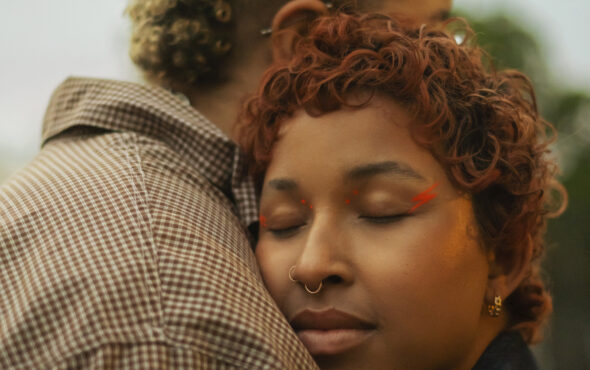
I was diagnosed with HIV on 18 January 2010, 14 years ago. I was one of 6,000 people diagnosed that year, the majority gay or bi men. In 2023, 3,805 people were diagnosed, the majority within the straight community.
This shift in the changing pattern of HIV diagnoses happened several years ago. While gay and bi men are still more impacted relative to population size and HIV diagnoses in this group each year are still in the high hundreds, the LGBTQIA+ population also lead in utilising testing, earlier access to treatment and PrEP. Screened more frequently for the virus than our straight counterparts, if we do test positive we are put on the treatment pathway sooner. We become undetectable, meaning that we can’t pass the virus on. This is called Undetectable equals Untransmittable, or U = U. Gay and bi men are also far more likely to be accessing the prophylactic PrEP, which protects them from HIV.
Much of our effort now focuses on encouraging straight people to engage in the prevention methods which have contributed to a year-on-year decline in HIV diagnoses amongst gay and bi men since 2014. If we are to end HIV diagnoses in the UK by 2030, we need to get everyone testing and promote U = U and PrEP.
The announcement last November that opt-out testing for HIV, hepatitis C and hepatitis B is to be expanded from 33 to a further 47 Accident & Emergency departments will be central to identifying people who are unaware they are living with HIV. The initial pilot scheme, which began in 2022, led to over 4,000 people being diagnosed with HIV, hepatitis C and hepatitis B, including 934 HIV diagnoses in just 18 months.
There’s a lot of excitement around prevention right now. However, whilst more straight people are being diagnosed with HIV, for many decades the greater proportion of diagnoses were among gay and bi men. This means that over half of the approximately 107,000 people living with HIV in the UK are LGBTQIA+ and this is unlikely to change any time soon. So when it comes to the treatment and care of people living with HIV, services tailored to gay and bi men, as well as trans and non-binary people, are as important as ever.
When discussing ageing with HIV in the UK, we are often considering the needs of older gay and bi men, who may have been diagnosed before the introduction of effective antiretroviral HIV treatments in 1996. Many older people living with HIV are not only dealing with co-morbidities, but have lost entire friendship circles to the virus. Earlier experimental treatments had multiple side effects. Older people living with HIV bear both the physical and mental consequences of the virus.
Today, when someone receives an HIV diagnosis it still has the potential to be devastating. However, individuals are promptly informed that they can expect a normal lifespan and may only have to take one pill a day, or they could be eligible for eight-weekly injectable treatments. A diagnosis today, with the knowledge surrounding U=U, is different to my own diagnosis in 2010, just as my diagnosis in 2010 was very different to a diagnosis before 1996.
I really liked the national campaign from the Scottish Government, in collaboration with Terrence Higgins Trust, last year. It was the first government funded TV campaign since the “Tombstone” adverts of 1987. It would be great to see a campaign similar to the Scottish initiative across all four nations, which highlights that HIV affects straight people, as well as gay and bi men. This is really important. During the era of Section 28, introduced in the 1980s, HIV was weaponised against gay and bi men as evidence of our moral depravity.
View this post on Instagram
While HIV was never a “gay disease” and never discriminated, we can still acknowledge that HIV has had a unique impact on the LGBTQIA+ psyche over the past 40 years. HIV initially set the campaign for LGBTQIA+ rights back in the UK, as it caused gay and bi men to be stereotyped. Many of the leaders of our movement died of AIDS.
However, the virus produced its own movement for equality, uniting diverse groups in the battle for treatment and against stigma. Its ideas and momentum fed into the fight for LGBTQIA+ rights, just as it in turn had been inspired by the civil rights movement in the USA and the fight for gender equality globally.
National HIV Testing Week takes place from Monday, 5 February. Of course, it’s important that we get gay and bi men testing, but it’s equally important to persuade our straight friends, family or work colleagues to test.
As I mark 14 years of living with HIV, it’s worth reflecting that almost every gay and bi man in the country will know someone openly living with HIV. We need to turn our experience and knowledge to finding straight people living with HIV, but at the same time ensure the needs of LGBTQIA+ people living with HIV are met. We also need to learn from their wisdom and celebrate their achievements. Had it not been for that older generation of AIDS campaigners, gay and bi men would not be in the situation where many of us do not live in fear of the virus.
Whether you are LGBTQIA+ or straight, newly diagnosed or a long-term survivor, remember that if you need support of any kind or would just like to learn more about HIV, head to Terrence Higgins Trust’s website.


